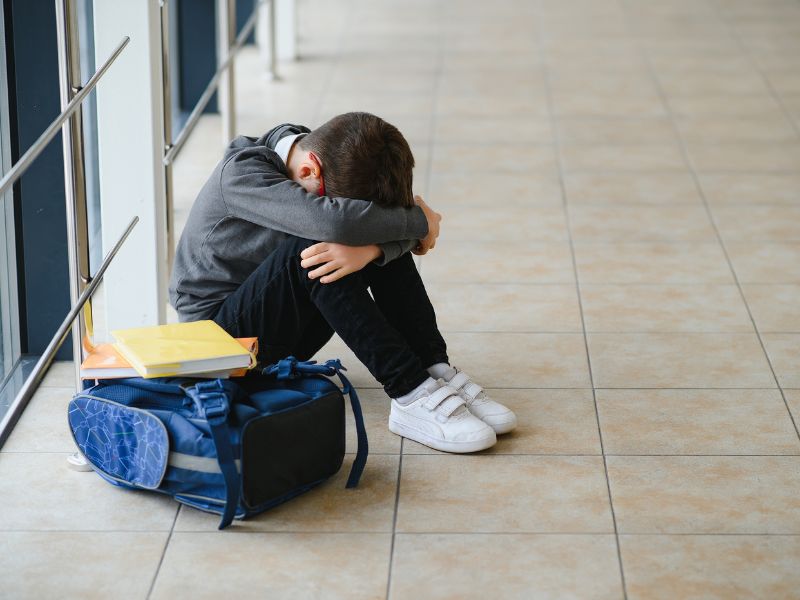There is no doubt that adolescents are struggling. Just do a quick Google search on adolescent mental health and you will see a plethora of articles detailing statistics on increased anxiety, depression and suicide amongst tweens and teens. What you will also find is that much of the information and statistics are female-centric. Take the recent 2021 Youth Risk Behavior Survey (YRBS) which showed statistically that girls are faring much worse than boys across all measures. However, a stat that is widely unknown and just as concerning is that being male is the biggest risk factor for suicide.
More specifically, the CDC’s 2021 National Vital Statistics System showed a significant increase in male suicide among teens and young men with rates up 8% between 2020 and 2021 in males 15-24.
Unlike females, who have higher rates of reported suicidal ideation and suicide attempts, males are four times more likely to commit suicide. But why?
- Males tend to be more impulsive than females.
- When males decide to make an attempt, it often feels and is more final due to the inability to continue to hold their feelings in anymore.
- Males tend to choose more violent and lethal methods of suicide.
Regardless of the why, this statistic should be sounding off all the alarm bells, but it isn’t. Certainly not in the same way that is for females. So why the disparity? Why the lack of awareness, information and attention to an equally significant mental health crisis?
There are a few reasons why mental health concerns for boys are widely unknown and underreported.
-
Societal norms and expectations
Our society allows girls to be more emotionally expressive and talk more openly about their mental health. In fact, it is not only normalized, but it is often encouraged. For boys, there are societal expectations to be strong and independent. In fact, many boys are conditioned from a young age to suppress their feelings and limit emotional expression for fear of being seen as weak and vulnerable. This conditioning means that many boys are unlikely to tell others when they are feeling sad or anxious and are less likely to seek help.
-
Differences in emotional expression
Because the expression of more vulnerable feelings is frowned upon for boys, the way that they express feelings like sadness and anxiety can be very different than girls. According to the National Institute of Mental Health, because boys learn not to express sadness openly, many will instead exhibit their emotions through irritability, anger and aggression. As a result, adults may not recognize these behaviors as signs and symptoms of underlying depression and anxiety, therefore leaving those needs untreated.
-
Lack of emotional IQ
Because boys are conditioned to have a narrower range of emotions, it can be difficult for them to identify those more vulnerable emotions under the anger. If they can’t identify those emotions, they can’t communicate those emotions, and therefore they can’t get the validation and help they need.
How to Help
- Name it! Children are not born understanding their internal world. They learn through their experiences and through others. As parents and caregivers, we can help give boys the vocabulary to speak about and understand their emotional experiences. The more they understand, the better they can communicate their needs.
- Change the messaging: It is crucial to be aware of messaging within families about male expectations. Statements like “man up,” “grow up,” “be tough,” or “boys don’t cry” are not only invalidating but send the message to boys that it is not safe or OK to express their emotions. But these emotions don’t just go away – instead, they just get internalized or expressed in much more unhealthy ways. Change the messaging. Try “This is hard,” “Your feelings make sense,” or “We are here for you.”
- Model: While you are not going to single-handedly change decades of messaging around male mental health, you can make a difference for your son or males you may mentor. It starts with modeling. When adults, particularly trusted male adults, practice showing vulnerability and emotional expression, teen boys are likely to feel safe and comfortable to do the same.
- Normalize mental health: In my therapy practice, the bulk of our clients are females – most of whom are seeking help for anxiety, low self-esteem and depression. A much smaller percentage of clients are males – most of whom are sent to us due to behavioral concerns around ADHD and anger management. This small sample illustrates the larger issue at play. Boys mainly come to treatment because their behaviors are a problem, not because they express the need for help. Boys need to know that therapy is an option – not to fix them or their behaviors, but to help them with their underlying struggles.
- Listen more, talk less: This is a great rule of thumb when dealing with any adolescent, but particularly boys who tend to be less verbally expressive about their emotions than their female counterparts.
- Be observant: Males tend to be less likely to verbalize their emotions and struggles with others. Therefore, it is critical for parents to be attuned to physical and behavioral cues as a means of receiving feedback about their son’s mental health. Looking for changes in mood, sleep, level of irritability, eating, and social engagement can provide vital information about the state of a male teen’s overall well-being.
The stakes are high and the time to act is now. Through modeling, coaching, and supporting young males, we can have a significant impact on their mental health and save their lives.
If you or someone you know is having thoughts of suicide, call or text 988 to reach the National Suicide Prevention Lifeline.

